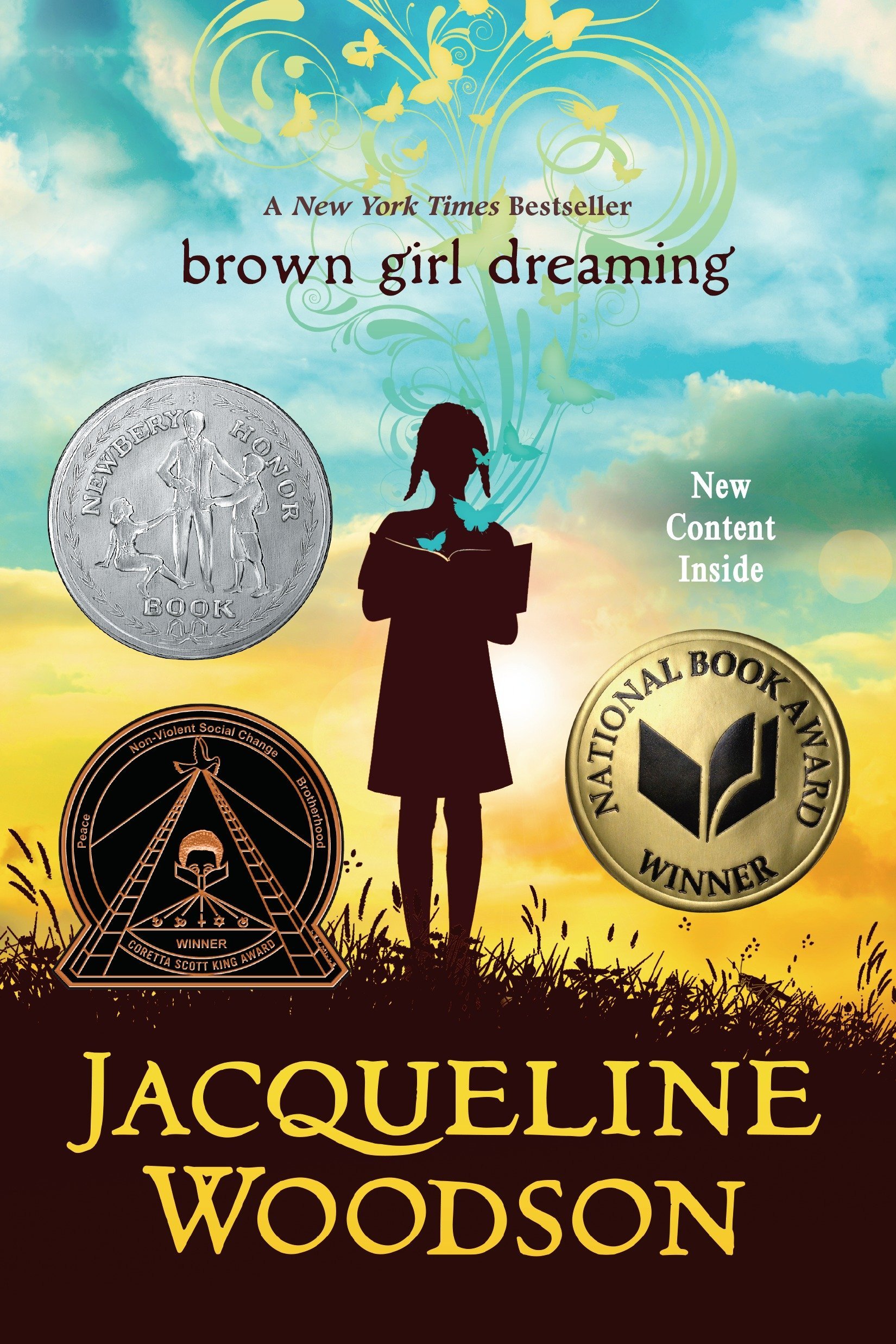 Brown Girl Dreaming
Brown Girl Dreaming
Written by Jacqueline Woodson
Penguin Random House, 2014, 349pp
ISBN: 9780399252518
Brown Girl Dreaming is a memoir written in verse. Woodson takes the reader through her early childhood into her preteens. Her story is primarily based in South Carolina. On pages one and two she introduces herself through a poem that includes these lines:
“I am born as the South explodes,
too many people too many years
enslaved, then emancipated
but not free, the people
who look like me
keep fighting
and marching
and getting killed
so that today–
and every day from this moment on,
brown children like me can grow up free.
Can grow up
learning and voting and walking and riding
wherever we want.”
Woodson introduces us to a time and place that is an essential part of who she is today. She was born in Ohio and raised in South Carolina during a time when the struggle was real and equality for African Americans was a hope and not yet a forgone conclusion. There was civil unrest in the country and the civil rights movement was in motion. South Carolina was the home of Woodson’s mother and her family. In this journey she tells the tale of how that family welcomes their daughter and her three children after Woodson’s mother leaves her father. While traveling on the bus to Greenville, South Carolina, in 1963, her mother sits in back because it was too dangerous to sit closer to the front and near the driver (Woodson, p. 30). Woodson tells her story to build a door that educates readers regarding: “social practices that function for social justice” as well as injustice (Botelho & Rudman, 2009, p. 27).
Woodson introduces her older brother Hope, her sister Odella, and her younger brother Roman. She identifies circumstances in her life that readers either have or at some point will experience. She suffers the death of loved ones, such as her grandfather and aunt. Her brother Roman becomes ill from eating lead paint. She even loses her father who wanted her to be named Jack. Throughout the story Woodson details her family history and softly introduces the socio-political aspects of the times and her family’s participation in the civil rights movement from a child’s perspective.
In writing this book, Woodson invites readers into her world. She not only shares her life story, but also shares her perspective of family, society and culture. She gives readers an opportunity to see themselves reflected in her work or to look through the window she has opened to note social and cultural aspects that differ from their lives. She opens a door to the political events of the time.
There are many instructional connections with this book. This text can be used to introduce students to the civil rights era and to supporters and leaders of the movement. It can also be used to inspire students to investigate their own family history for this time period. The book can be paired with Woodson’s other books, such as The Other Side (Woodson & Lewis, 2001), Show Way (Woodson & Talbott, 2005), and This is the Rope: A Story from the Great Migration (Woodson & Ransome, 2013). These books articulate the goals for writing African American children’s literature identified by Greenfield: “(a) encourage children to develop positive attitudes towards themselves; (b) help children learn how to overcome negative experiences and see new ways to solve problems; (c) familiarize children with Black history and achievements, and Black heroes; (d) encourage children to reflect on the strength of Black families and respect the contributions of elders; (e) inspire children to enlist in the struggle for freedom and equality; (f) engender a love for the arts” (as cited in Bishop, 2007, p. 231).
Jacqueline Woodson lives with her family in Brooklyn, New York and is an award-winning author. She has won The Poetry Foundation’s Young People’s Poet Laureate, Margaret A Edward Award for Lifetime Achievement, Newbery Honor Medal, The Coretta Scott King Award, ALA Notable Parent’s Choice Award, National Book Award, and Detroit Public School Student’s Favorite Author. In 2018 she was the recipient of the Astrid Lindgren Award, an international award demonstrating her global impact. Woodson ensnares the senses with her writing. In Brown Girl Dreaming she engages the reader’s imagination with descriptive prose. More information on Woodson is available on her website: jacquelinewoodson.com
Chiquita Days, University of Texas at Arlington
References
Bishop Sims, Rudine. (2010). African American children’s literature: Researching its development, exploring its voices. In S.A. Wolf, K. Coats, P.A. Enciso, & C. Jenkins (Eds.), Handbook of research on children’s and young adult literature (pp. 225-237). New York: Routledge
Botelho, Maria Jose’ and Rudman, Masha Kabakow. (2009). Critical multicultural analysis of children’s literature: Mirrors, windows, and doors. New York: Routledge
WOW Review, Volume XI, Issue 3 by Worlds of Words is licensed under a Creative Commons Attribution-NonCommercial-ShareAlike 4.0 International License. Based on work at https://wowlit.org/on-line-publications/review/xi-4/
